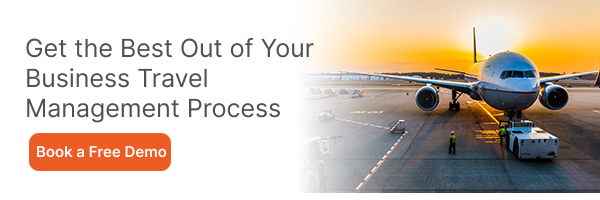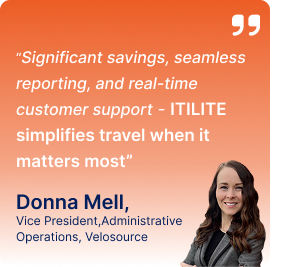
Have you ever thought about how effective your company’s travel program is? Are you saving enough on travel expenses? Do your employees find the booking process easy and efficient? These questions matter, but the answers aren’t always obvious. You need to monitor your travel management success rates. That’s why tracking the right Key Performance Indicators (KPIs) is important.
KPIs in travel management are metrics to measure how well a company handles business travel. They check if employees follow travel rules, how much money is saved, and how happy employees are with the travel process.
In this blog, we’ll discuss nine simple yet essential KPIs that will help you measure the effectiveness of your travel management strategy. By monitoring these, you can ensure the travel success rate of your program.
KPIs for Your Travel Management Program
1. Adoption Rate of Preferred Payment Methods
One of the first things to check to measure travel management success rates is whether your employees are using the payment methods approved by your company. For instance, corporate cards or pre-authorized payment tools are often better than personal cards because they simplify expense tracking and reduce errors.
If employees use other methods, it can lead to delays, confusion, and even higher costs. You can improve adoption by training employees on the benefits of corporate cards or offering faster reimbursements as an incentive. When more employees use the preferred methods, it’s easier for you to track expenses and control your travel budget.
2. Use of Online Booking Tools
If your company has invested in an online booking platform, it’s important to check if employees are actually using it. A booking tool makes it easier to follow company policies, find cost-effective options, and track travel expenses in one place.
When employees bypass these tools and book elsewhere, it can create inefficiencies and make it harder to manage travel. To boost usage, remind your team about the platform’s advantages, such as faster bookings and better policy compliance. High usage rates mean smoother processes and more accurate reporting for you.
3. Percentage of Policy-Compliant Bookings
Tracking how many bookings follow your company’s travel policy is another key measure of travel management success rates. Non-compliant bookings, such as booking flights outside of the allowed fare class or staying in overly expensive hotels, can quickly inflate your travel costs.
To improve this, keep your policy simple and clear so employees understand it easily. Automated systems can also flag out-of-policy bookings during the approval process. A high percentage of policy-compliant bookings shows that your travel program is both well-designed and effectively managed.
4. Average Booking Lead Time
When employees book their travel at the last minute, it often results in higher costs and more stress. Monitoring the average time between booking and the actual travel date gives you a good sense of how organized your travel planning is.
Encourage employees to book their trips earlier by sharing how it helps reduce costs. Some companies even offer small rewards for early bookings. The earlier the bookings, the better the savings and the smoother the experience for everyone involved.
5. Travel Cost Per Employee
Knowing how much your company spends on travel for each employee is a great way to identify potential savings. This KPI helps you understand whether your overall travel costs are reasonable or need adjustment.
If the cost seems high, check if employees are using cost-effective options for flights, hotels, and transport. Encourage them to stick to negotiated rates or budget-friendly options whenever possible. By keeping this metric under control, you can allocate your budget more effectively. This will help you ensure higher travel management success rates.
6. Savings from Negotiated Rates
Many companies negotiate rates with airlines, hotels, or car rental services to cut costs. Tracking how often employees use these negotiated rates is critical to see if you’re actually benefiting from these deals.
If usage is low, employees may not be aware of the discounts or might be booking outside the approved channels. Educate them about these options and make them easy to access through your booking tool. The higher the usage of negotiated rates, the more the travel success rate of your program.
7. Traveler Satisfaction
While saving money is important, your employees’ experience matters too. Unhappy travelers can lead to decreased productivity and low morale. Use surveys or feedback forms to measure traveler satisfaction after each trip.
If satisfaction is low, find out what’s causing it as it can affect travel management success rates. Is the booking process too complicated? Are the approved hotels uncomfortable? Addressing these concerns can make your employees feel valued and improve their overall travel experience.
8. Percentage of Trips Booked in Advance
Similar to booking lead time, this KPI measures how many trips are booked well in advance rather than at the last minute. Advance bookings often come with better rates for flights and accommodations, saving your company money.
Track this percentage and encourage employees to plan their trips earlier whenever possible. Setting reminders or sharing cost benefits can motivate employees to adopt this practice.
9. Compliance with Sustainability Goals
Sustainability is becoming a key focus for many companies to track travel success rates. For instance, you can track the percentage of trips booked with eco-friendly airlines or the use of public transport over private cabs.
If your program isn’t meeting sustainability targets, consider adding guidelines to encourage green travel practices. Highlighting these efforts also shows your commitment to environmental responsibility, which can enhance your brand reputation.
Achieving Travel Management Success with itilite
By keeping track of these nine KPIs, you can gain a clear understanding of how well your travel program is performing. Remember, success isn’t just about cutting costs. It’s about creating a system that balances efficiency, employee satisfaction, and sustainability. When you focus on these areas, you’ll build a travel program that truly supports your business goals.
This is where itilite can make a big difference. With itilite advanced travel management platform, you can effortlessly track and improve these KPIs. The platform ensures compliance by integrating company policies into the booking process and optimizes costs through automated re-bookings and negotiated rates. Plus, the platform’s centralized system provides real-time insights, making it easier for you to stay in control.
With itilite, not only can you achieve better travel management success rates for your company, but you can also provide your employees with a seamless travel experience. So, why settle for average when you can aim for exceptional?
Book a demo and take the first step toward improving your travel KPIs with itilite today!








